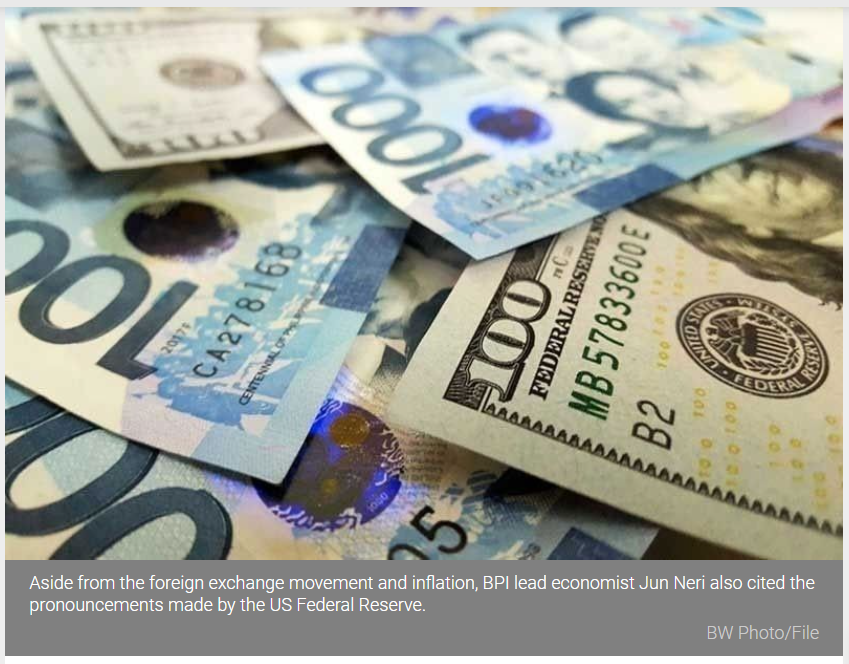Philippines: ‘Weak peso, easing prices may force BSP to hike rates’
MANILA, Philippines — Bank of the Philippine Islands (BPI) is not discounting the possibility of monetary adjustments in the coming months amid the continued weakening of the peso as well as the easing inflation.
Aside from the foreign exchange movement and inflation, BPI lead economist Jun Neri also cited the pronouncements made by the US Federal Reserve.
“Aside from inflation, another factor that could challenge the BSP’s ability to keep interest rates steady is the hawkish tilt of the Federal Reserve. The US central bank recently hinted it could increase its interest rates in 2023. This means there is a chance that the Fed could start tapering its bond purchases in 2022,” Neri said.
He said expectations of tighter US dollar liquidity in the coming months may exert pressure on the peso and drain the country’s gross international reserves (GIR) if the policy rate is kept at an all-time low of two percent.
For a period of just two weeks at 47.90 to $1, the peso has depreciated sharply to breach the 49 to $1 mark.
“Dollar demand may pick up and the exchange rate may move closer to revisit the 50 level, even if just briefly, later this year. Meanwhile, the possibility of tighter dollar supply may contribute further to peso depreciation,” he said.
Neri said the US Fed might announce in the coming months how it would unwind its bond purchases, thereby exerting additional pressure on the local currency.
“We continue to see the possibility of monetary adjustments in the coming months, especially given the recent movement in the FX market,” he said.
The Ayala-led bank sees a rebound in imports as a result of the economic reopening as the government has reduced restrictions in the National Capital Region and nearby provinces (NCR Plus) given the recent decline in COVID-19 cases.
The bank lowered its inflation forecast to 4.3 percent from 4.5 percent this year after it eased 4.1 percent in June from 4.5 percent in May, but remained above the two to four percent target set by the Bangko Sentral ng Pilipinas (BSP).
The economists said upside risks to inflation remain that could eventually lead to higher rates in the coming months.
Neri said supply disruptions have kept food prices elevated and could be vulnerable to a surge in transport costs, trade restrictions, the threat of African swine fever (ASF) for pork producers, and weather disturbances.
“Substantial peso depreciation might force monetary authorities to make some policy adjustments. The BSP might be forced to hike earlier than expected in order to temper the decline in the GIR and protect the country’s credit rating,” Neri said.
S&P Global Ratings, Moody’s Investors Service and Fitch Ratings affirmed the investment grade credit rating and stable outlook of the Philippines despite a record 9.6 percent gross domestic product (GDP) contraction last year as the economy stalled amid the containment measures to contain the spread of COVID-19 cases.
After increasing to record levels last year given the huge decline in imports, the country’s foreign exchange reserves slipped slightly to $106.98 billion in May from $107.71 billion in April.
The GIR – the sum of all foreign exchange flowing into the country and serves as buffer to ensure that it will not run out of foreign exchange that it could use in case of external shocks – is seen hitting record highs of $114 billion this year and $117 billion next year.
Source: https://www.philstar.com/business/2021/07/08/2110905/weak-peso-easing-prices-may-force-bsp-hike-rates


 English
English




